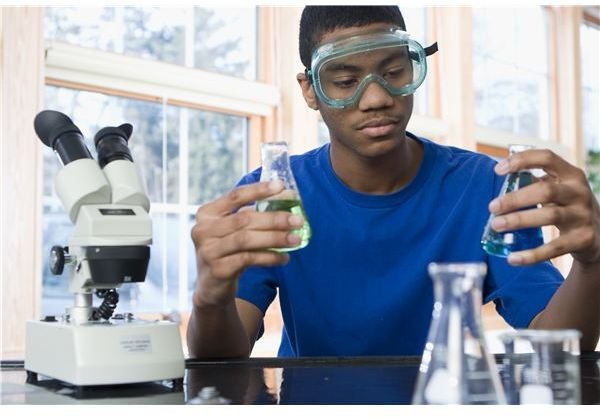High School Science: Acid Base Lab Demonstrating the Body's Natural Buffer System
Alkalosis or Acidosis
If the buffer system created by the right pH balance was absent from our blood, then eating acidic or basic foods would cause the pH to swing too high (alkalosis)
or too low (acidosis). The result could be deadly.
This lab will demonstrate the buffering solution found in your blood.
Our blood cannot tolerate a drastic shift in pH. It’s a good thing, then, that human blood contains a buffer of carbonic acid, H2CO3, and sodium bicarbonate, NaHCO3. This buffer regulates drastic shifts in the pH of our blood.
Pre-Lab Questions
1.What is a buffer?
2.What two parts are necessary in a buffer?
3.What does each part do?
4. Read through the procedure. Which setup is the control?
5. What is the variable in the experiment?
6. What question are we trying to understand by performing this experiment?
Procedure
Beaker #1: Unbuffered Solution
1. Place 50 ml of deionized water in a beaker and add 6 drops of universal pH indicator. Note the color and record.
2. Add 3 drops of 1.0 M HCl. Note the new color and record the pH.
3. Save this beaker & solution for comparison to situation #2.
Beaker #2: Buffered System
1. Make a buffer solution in a new beaker. Do this by putting 50 ml of 0.1 M NaHCO3 solution in the beaker and blowing exhaled breath into the solution for at least 2 minutes.
2. Add 6 drops of universal pH indicator. Note the color and record the pH.
3. Add 3 drops of 1.0 M HCl as you did above and note the color and record the pH.
4. Continue to add acid drop by drop, counting the drops (swirl to mix) until the color matches the unbuffered solution from step 2 in situation #1. How many drops did you use?Record.
Data Table
Beaker 1
1. Initial color and pH of beaker 1 _______________
2. Final color and pH of beaker 1 _______________
Beaker 2
1. Initial color and pH of beaker 2 _______________
2. pH and color of beaker 2 after HCl addition _______________
3. Number of drops of HCl added to beaker 2 _______________
Post-Lab Questions
1. Did the buffer system work? Give evidence.
2. Exhaled breath contains CO2. This carbon dioxide reacted with the water in the beaker to form carbonic acid, H2CO3. Write the chemical reaction.
3. Write a reaction for how this buffer acts when an acid (contributes hydrogen ions) is added.
4. Write a reaction for how this buffer would react if a base (hydroxide ions) were added.
Last Thoughts
1. In this lab, students are directed to make a buffer system that simulates one found in human blood. The buffer should work, allowing students to add quite a large amount of hydrochloric acid before they see a color (pH) change.
2. CO2 + H2O –> H2CO3
3. H+ + HCO3- –> H2CO3 (adding an acid to the buffer creates more of the acidic component already present in the buffer.)
4. OH- + H2CO3 –> H2O + HCO3- (adding a base to the buffer produces more of the bicarbonate ion, the basic component of the buffer.)
This activity naturally leads to a discussion of buffer capacity. How much acid can a buffer neutralize? How much base? It also offers an opportunity to write equations showing how the buffer reacts with the acidic and basic components of the added solutions.
This lab focused on just one of the three buffering systems found in the human body. For more on the other systems, visit this page on buffer systems from Bryn Mawr University.
This post is part of the series: Acid-Base Buffer Lab
A laboratory exercise is presented where students make their own buffer. Background information and instructions on how to create the lab are included, with pre-requisites and post-instruction ideas offered.
